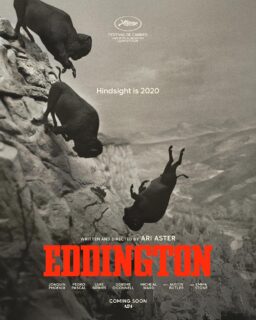One day it was winter. The next day there was a wet restlessness in the wind, and it was March. We knew it was March because Dan-Dan the Yo-Yo Man always came to town right around St. Patrick’s Day. He visited all the grade school playgrounds, driving up in his fat maroon Hudson and jumping out with the yo-yo already in the air. He passed out fliers for the annual yo-yo contest at the Princess Theater.
The yo-yo was the first of many things I failed to master in life. Oh, I could walk the dog and loop the loop. But I was never able to rock the baby, so I was always disqualified on the first Saturday, the day when every kid in Urbana was up onstage at the Princess with his yo-yo. Two weeks later, when Dan Dan presided over the finals, a kid would win a new Schwinn bike. The kid was never me.
The Princess closed forever last month. Friends and relatives sent me clippings in the mail from the Champaign-Urbana News-Gazette. “The Last Picture Show in Urbana,” the headline said. It was also the only picture show in Urbana. Old clippings show it was in business as early as 1915. It was the place where I learned to love the movies.
In 1950, television was still a rumor in Champaign-Urbana. Some jerk down the street might put up a big antenna and be able to drag in a test pattern from Peoria, but for everybody else, mass media meant the radio and the movies. Over in Champaign they had the Rialto, the Orpheum, the Virginia, the Park and the Illini, which was down by the railroad station and specialized in movies about nudist camps and the mademoiselles of Gay Paree. On campus, there was the Coed. In Urbana, there was the Princess, where the program changed twice a week, and there was a Kiddie Matinee on Saturdays. Best deal in town
The Kiddie Matinee was the biggest bargain in town. For exactly 9 cents, you got a double feature, five color cartoons, a newsreel, the coming attractions and a chapter of a serial starring Batman or Sheena, Queen of the Jungle. In March, you got Dan-Dan the Yo-Yo Man.
Your parents dropped you off at noon. You waited in the alley that ran down the side of the theater. Some of the older kids had just finished their Saturday morning dance classes at Thelma Lee Rose’s dance studio, which was upstairs from the theater. When the Princess doors opened, there was a mad rush for tickets and seats: Front row was the best. Usually your parents gave you 20 cents, which was enough for Jujubes and popcorn, with a penny left over for the jawbreaker machine.
First came the color cartoons, five of them, each exactly six minutes long. After “Th-th-th-at’s All, Folks!” came the first half of the double feature; , which; was always a Western: Hopalong Cassidy, Rex Allen, Roy Rogers, Gene Autry or those two slightly kinky, sinister figures, Lash LaRue and Whip Wilson, who are due to be rediscovered any day now in camp circles. Then came the serial, the newsreel (“In sunny Cypress Gardens, mermaids learn that what goes up, comes down!”) and the ads for the Urbana Pure Milk Co. and Reliable Furniture. Then came the second feature, which in my memory is always a cartoon starring the Bowery Boys with Huntz Hall.
For a kid in grade school, going to the movies was one of the few acts in life that you could undertake entirely on your own.
You chose your own seat. You ate your own popcorn. You lived out the adventures on the screen with an intensity that no later masterpiece by Steven Spielberg or George Lucas would ever equal. You laughed, you shrieked, and when the hero even looked like he was going to kiss the girl, you groaned.
The Princess in those days was not without its ominous side. Every show started with a slide offering a $5 reward “for the apprehension and conviction of vandals.” Then came a dire warning: “Ladies! Hang Onto Your Bags! Do Not Leave Them on the Seat Next to You!” In the boys’ room, which was downstairs off the lobby, junior high school kids clustered in corners and smoked cigarettes. There was running warfare between the ushers and kids who tried to sneak in through the exit door. And if you bumped against the back of the seat in front of you, some junior thug was likely to turn around and threaten you with a knuckle sandwich.
Eventually I grew too old for the Kiddie Matinees. I became one of the students at Thelma Lee Rose’s, learning the fox-trot and the box step. One Friday night Miss Rose held a dance for her students, and I asked a girl from my grade at school. When we got to the doorway that led up a steep flight of stairs to her studios, I discovered to my humiliation that I had made a mistake, and the dance was not until the following week.
My date and I pooled our funds and bought tickets to “The Bridge Over the River Kwai,” which was the current feature at the Princess, and it was the best movie I had ever seen in my life. And my date let me put my arm around her, and that was even better. Sparked interest in films
In the Princess Theater I saw “Lawrence of Arabia” and “The Long, Long Trailer” and Pat Boone in “April Love” and Doris Day in “Young at Heart” and hundreds of other movies. Eventually I made my way across town for “Citizen Kane” and Bergman and Fellini at the Park (which had become the Art) and “The Immoral Mr. Teas” at the Illini.
One day, after I left Champaign-Urbana for the big city to the north, I learned that the Princess had been renamed the Cinema. And it seemed to me that in the very change of name, an era had passed and a crucial mistake had been made, because who would ever rather go to the Cinema than to the Princess?
Eventually they divided the old theater into two smaller auditoriums. They experimented with cheaper ticket prices. Business fell off. The students at the nearby University of Illinois were presumably looking at videos or logged on to the Internet. A giant multiscreen megaplex opened south of town, on U.S. 45. You could walk to the Princess, but the new extravaganza wasn’t even in Champaign or Urbana.
In the movie “The Last Picture Show,” the last movie shown in the local theater was “Red River,” with John Wayne. At the Cinema, the final double bill was “Ed Wood,” a comedy about a 1950s exploitation film director, and “Red Rock West,” a triple-cross film noir. The night before they closed, they took in $50. Admission was $3 until 6 p.m. and $5 afterward. Still the biggest bargain in town.











